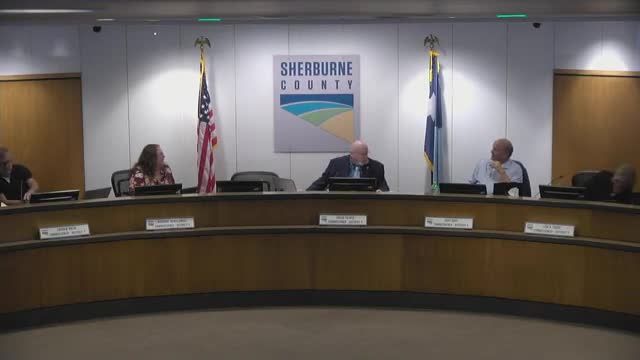Minnesota debates childcare regulations amid rising concerns
July 19, 2024 | Sherburne County, Minnesota

This article was created by AI summarizing key points discussed. AI makes mistakes, so for full details and context, please refer to the video of the full meeting. Please report any errors so we can fix them. Report an error »

During a recent government meeting, officials discussed several key initiatives aimed at enhancing community engagement and addressing pressing local issues. A significant focus was placed on increasing youth participation in upcoming events, with plans to implement strategies to engage high school students more effectively.
The meeting also highlighted insights gained from the National Association of Counties (NACO) conference, particularly regarding waste-to-energy facilities. One official shared their experience touring a facility in Hillsborough County, Florida, which processes half of the county's waste to generate energy. This model, while not entirely carbon neutral, is viewed as a potential solution for Minnesota's waste management and energy needs. The official emphasized the importance of forming a coalition to explore similar initiatives in Minnesota, noting that countries like Switzerland successfully operate numerous waste-to-energy plants.
Another critical topic was the proposed changes to childcare regulations in Minnesota, which would expand the current guidelines from 27 to 97 pages. Concerns were raised about the potential impact on home-based childcare providers, many of whom oppose the new regulations, citing them as overly burdensome. The meeting underscored the need for a balanced approach to regulation that prioritizes child safety while avoiding excessive mandates that could hinder childcare services.
Officials also discussed the importance of public commentary and legislative engagement regarding the childcare regulations, stressing the necessity for ongoing dialogue with state legislators to ensure that community concerns are adequately represented.
In a separate note, the meeting addressed a recent statement released by the county regarding an assassination attempt on Donald Trump. Officials clarified that such statements reflect the collective opinion of the board and should not be misconstrued as individual viewpoints.
Overall, the meeting underscored a commitment to addressing community needs through collaboration, thoughtful regulation, and proactive engagement with both residents and state officials.
The meeting also highlighted insights gained from the National Association of Counties (NACO) conference, particularly regarding waste-to-energy facilities. One official shared their experience touring a facility in Hillsborough County, Florida, which processes half of the county's waste to generate energy. This model, while not entirely carbon neutral, is viewed as a potential solution for Minnesota's waste management and energy needs. The official emphasized the importance of forming a coalition to explore similar initiatives in Minnesota, noting that countries like Switzerland successfully operate numerous waste-to-energy plants.
Another critical topic was the proposed changes to childcare regulations in Minnesota, which would expand the current guidelines from 27 to 97 pages. Concerns were raised about the potential impact on home-based childcare providers, many of whom oppose the new regulations, citing them as overly burdensome. The meeting underscored the need for a balanced approach to regulation that prioritizes child safety while avoiding excessive mandates that could hinder childcare services.
Officials also discussed the importance of public commentary and legislative engagement regarding the childcare regulations, stressing the necessity for ongoing dialogue with state legislators to ensure that community concerns are adequately represented.
In a separate note, the meeting addressed a recent statement released by the county regarding an assassination attempt on Donald Trump. Officials clarified that such statements reflect the collective opinion of the board and should not be misconstrued as individual viewpoints.
Overall, the meeting underscored a commitment to addressing community needs through collaboration, thoughtful regulation, and proactive engagement with both residents and state officials.
View full meeting
This article is based on a recent meeting—watch the full video and explore the complete transcript for deeper insights into the discussion.
View full meeting
